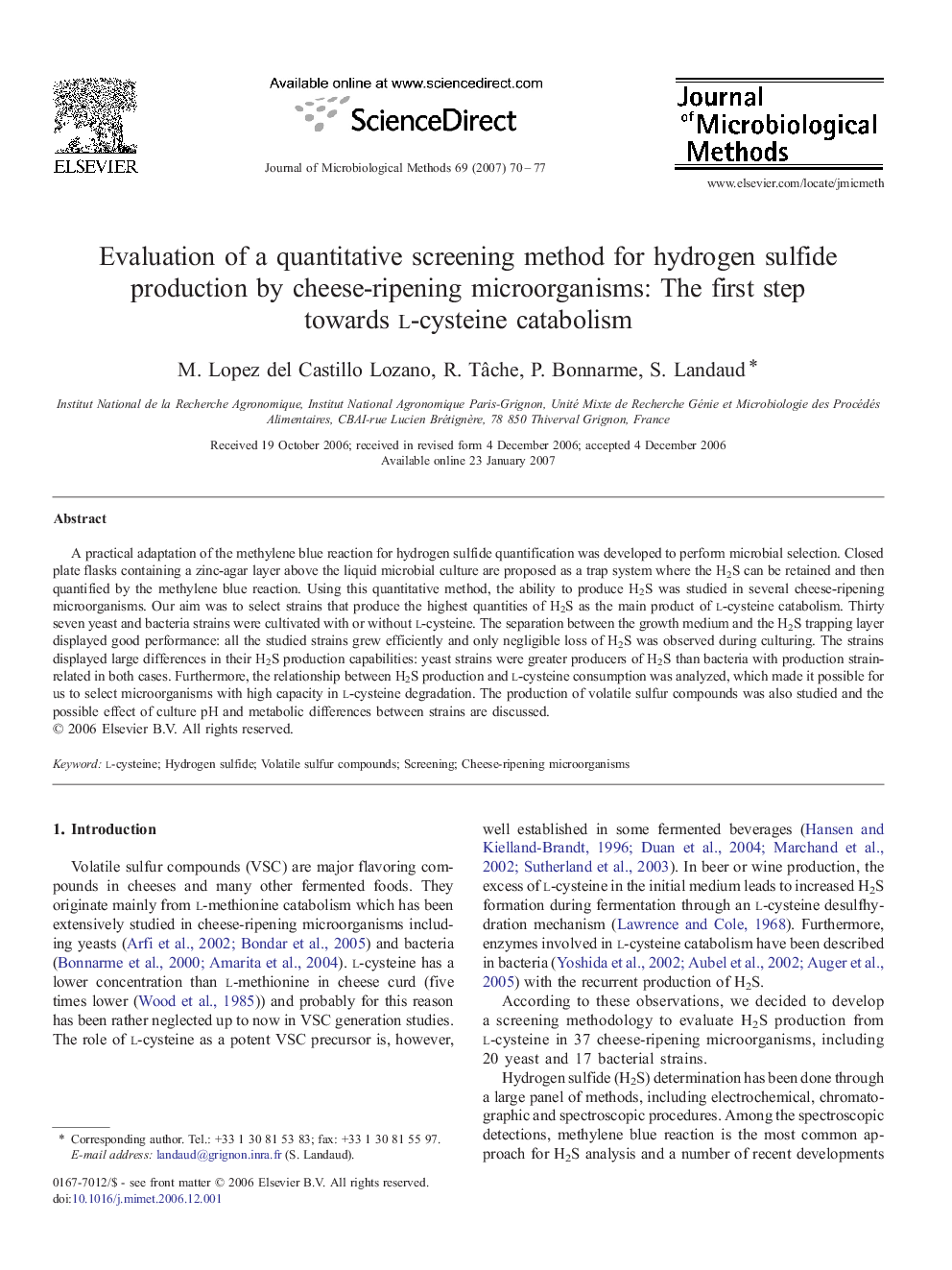| Article ID | Journal | Published Year | Pages | File Type |
|---|---|---|---|---|
| 2091096 | Journal of Microbiological Methods | 2007 | 8 Pages |
A practical adaptation of the methylene blue reaction for hydrogen sulfide quantification was developed to perform microbial selection. Closed plate flasks containing a zinc-agar layer above the liquid microbial culture are proposed as a trap system where the H2S can be retained and then quantified by the methylene blue reaction. Using this quantitative method, the ability to produce H2S was studied in several cheese-ripening microorganisms. Our aim was to select strains that produce the highest quantities of H2S as the main product of l-cysteine catabolism. Thirty seven yeast and bacteria strains were cultivated with or without l-cysteine. The separation between the growth medium and the H2S trapping layer displayed good performance: all the studied strains grew efficiently and only negligible loss of H2S was observed during culturing. The strains displayed large differences in their H2S production capabilities: yeast strains were greater producers of H2S than bacteria with production strain-related in both cases. Furthermore, the relationship between H2S production and l-cysteine consumption was analyzed, which made it possible for us to select microorganisms with high capacity in l-cysteine degradation. The production of volatile sulfur compounds was also studied and the possible effect of culture pH and metabolic differences between strains are discussed.
